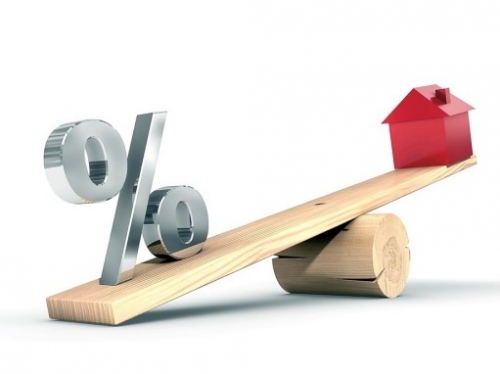Fixed vs. Variable Rate Mortgages: Which one is better?
Author:
Randy Johnson
Date: September 1, 2015

Fixed vs. Variable Rate
Mortgages: Which one is better ? As of October 2013
Over the years borrower’s
who have chosen a Variable Rate Mortgage VRM have often come out
ahead. Lower interest rates, lower payments and considerable savings
have typically resulted. In the past I saved one client almost
$81,000 on their $500K+ mortgage. It’s unlikely we’ll see those
savings for some time, but it shows one how important this decision
can be.
Currently 5 year bond yields
have seen a net increase by about ¾% over the past several months.
These bond yields directly affect 5 year interest rates on
mortgages. The gap between a 3 year VRM and Fixed Rates have
increased to a point where one should closely examine a VRM as a
mortgage option.
The Conclusions:
If we compare a current
$400,000, 5 year fixed rate to a 3 year VRM, one would save over
$13,000 by choosing a VRM. A similar comparison to a 3 year fixed
rate, one would save over $9,000.
If we compare a 5 and 3 year
fixed rate to a VRM where prime increased by ¼% every 6 months, the
savings would be $9,126, and $4,411. The ending prime would be
4.0%
If Prime increased to 5.0%
over the 3 years, we would have a ‘break-even’ situation. Prime
would be at 5.0% and the fixed rate would be a minimal $265 better.
If you feel Prime will
increase beyond 5.0% in 3 years, a fixed rate would be best.
Otherwise a VRM may be the best choice. Your VRM monthly payments
will not skyrocket, and will still result in lower payments if Prime
reached 5.0%.
In the event we see prime
increasing dramatically, you should be aware that almost all lenders
will allow you to lock into a fixed rate at no cost or penalty.
There is a ‘safety net’.
The Data:
| Mortgage
Type & Size |
Interest Rate |
Monthly Payments |
Total Payments |
Ending Principal Balance |
Amortization
|
Savings |
5 Year
Fixed Rate
$400,000 |
3.69% |
$2,037 |
$73,346 |
$368,971 |
25 Years |
|
3 Year
Fixed Rate
$400,000 |
3.29% |
$1,953 |
$70,308 |
$367,375 |
25 Years |
|
3 Year
Variable Rate
$400,000
Prime = 3.0% |
2.5% Prime – 0.5% |
$1,792 |
$64,507 |
$364,051 |
25 Years |
A VRM saves $13,760
over a 5 Year Fixed
A VRM saves $,9,126
over a 3 Year Fixed |
3 Year
Variable Rate
$400,000
Ending Prime = 4.0% |
2.5% for the 1st year, then increases ¼% every 6 months |
$1,861 Ending Payment |
$65,285 |
$367,988 |
25 Years |
A VRM increasing by ¼%
semi-annually after Year 1 saves $9,045 over a 5 Year Fixed
A VRM increasing by ¼% semi-annually after Year 1 saves $4,411 over a 3
Year Fixed |
3 Year
Variable Rate
$400,000
Ending Prime = 5.0% |
2.5% for the 1st year, then increases by ½% every 6 months |
$2,068
Ending
Payment |
$68,349 |
$359,599 |
25 Years |
This is essentially a
‘break-even’ situation. The fixed is
marginally $265 better. |
We would always want to track
the economic outlook when following prime and bond yields. While no
one has a crystal ball, it can be useful to see where we are headed.
Prime has currently remained at 3.0% for just over 3 years. Most
economists suggest we may not see it change for about another year.
Hence I prepared a "Sensitivity Analysis” of the Fixed vs. VRM
waiting about a year before an increase. Additionally we know that
these analyses can change weekly or monthly. One must keep them
up-to-date. I would be happy to review your situation at any time,
on a case by case basis.
Historical Facts
In 2001 a Finance Professor at
York University, Moshe Milevsky did a study of Fixed vs. VRM
mortgages using "basic financial and statistical concepts”. In
reviewing data from 1950 to 2000 he concluded one was better off in a
Variable Rate Mortgage VRM 88.6% of the time. "The good really
appears to outweigh the bad in this equation”. This favourable
pattern increased to 90.1% by 2008.
Historically, choosing a VRM
is the better option 9 out of 10 times.
"In updating the data to
2008, we confirmed that savings accrue to homeowners who eschew the
temptation to forecast interest rates and are willing to accept risk
and finance a mortgage with a float-or a variable-rate mortgage.”
"Practically speaking, we
interpret the updated data as further evidence mortgage financing
continues to be a risk-and-reward decision that must be integrated
within the client’s personal balance sheet and risk management
strategy.”
Please stay tuned for more
comparative advice. It really works!
Mortgages Financing Fixed Rate Variable Rate


